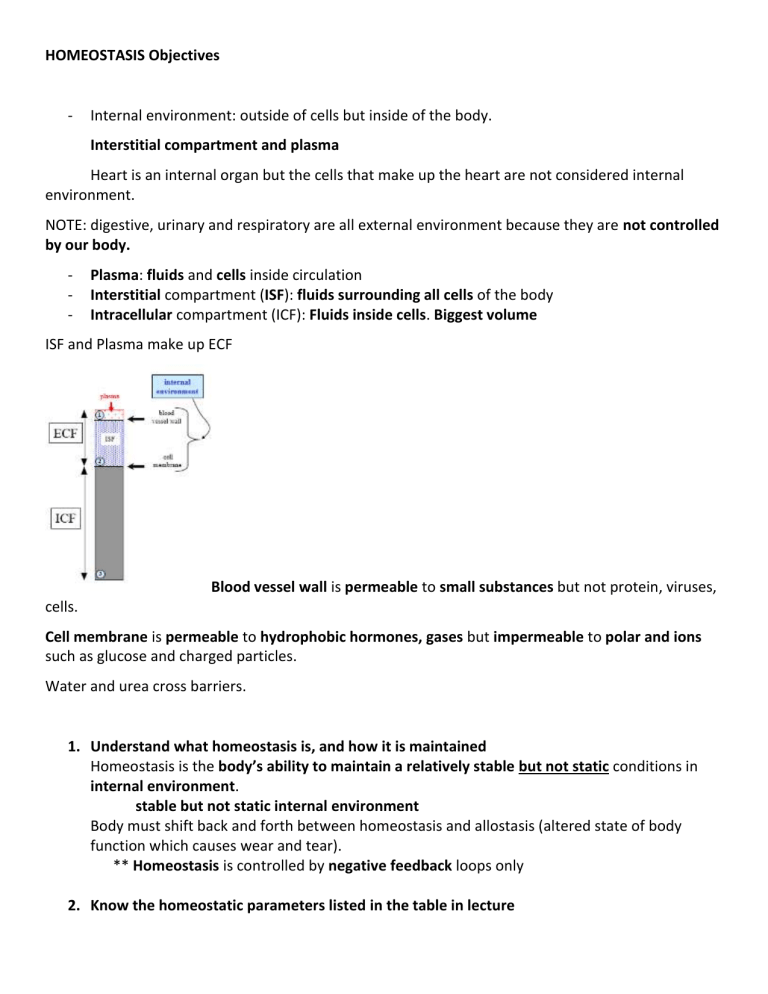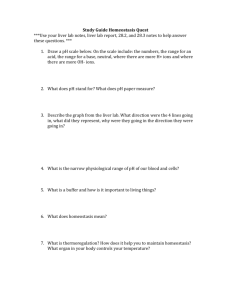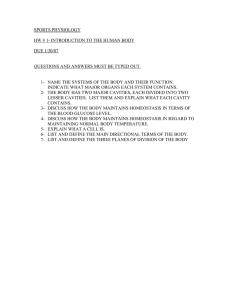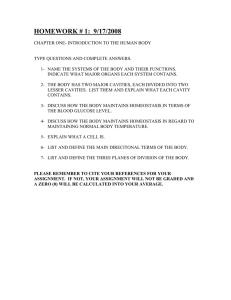Homeostasis Lecture Notes: Internal Environment & Feedback Loops
advertisement

HOMEOSTASIS Objectives - Internal environment: outside of cells but inside of the body. Interstitial compartment and plasma Heart is an internal organ but the cells that make up the heart are not considered internal environment. NOTE: digestive, urinary and respiratory are all external environment because they are not controlled by our body. - Plasma: fluids and cells inside circulation Interstitial compartment (ISF): fluids surrounding all cells of the body Intracellular compartment (ICF): Fluids inside cells. Biggest volume ISF and Plasma make up ECF Blood vessel wall is permeable to small substances but not protein, viruses, cells. Cell membrane is permeable to hydrophobic hormones, gases but impermeable to polar and ions such as glucose and charged particles. Water and urea cross barriers. 1. Understand what homeostasis is, and how it is maintained Homeostasis is the body’s ability to maintain a relatively stable but not static conditions in internal environment. stable but not static internal environment Body must shift back and forth between homeostasis and allostasis (altered state of body function which causes wear and tear). ** Homeostasis is controlled by negative feedback loops only 2. Know the homeostatic parameters listed in the table in lecture No need to memorize but draw conclusions. Ex. Glucose: the non-lethal limit is high and in large range which means that it must not be tightly regulated in comparison to pH or potassium which has a very small range for fluctuations indicating that it is important to be in range for them. 3. Understand the difference between a negative feedback loop and a positive feedback loop. Pg. 8 Negative feedback: initial increase in the variable leads to subsequent decrease in the variable to bring it back to normal. Stable Positive feedback: an initial increase in the variable triggers further increase in that variable. Unstable There are more negative feedback loops than positive feedback loops physiologically. 4. Understand how negative feedback loops control homeostatic parameters External change leads to internal change internal sensors detect changes (ex. pH, O2, CO2, pressure sensors etc.) sensors are triggered, and the information is sent to three main controlling systems (Nervous (brain and spinal cord), endocrine, immune) send their own signal to organ system to offset the change Ex: Glucose Homeostasis and negative feedback: INPUT=OUTPUT; absorption into gut + release from liver = uptake into cells Input: food and release from liver Output: uptake into cells for energy storage and use, maintain ion gradient, respiration and circulation Eat increase in plasma glucose levelsignal to pancreas which releases insulin insulin increases the rate of glucose transport to cells (skeletal muscle cells mostly, adipose, and liver cells) brings plasma glucose levels back down.



